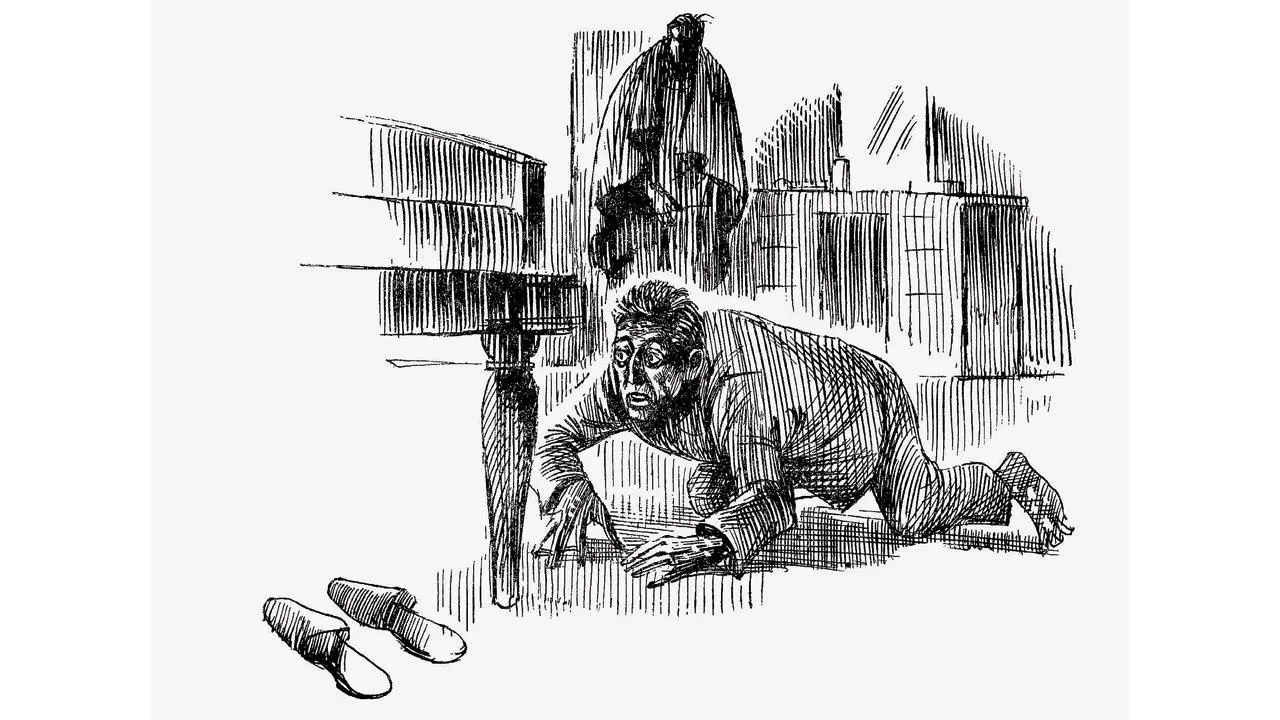Celebrate the visionary filmmaker Satyajit Ray’s birth anniversary with a new collection of ghost stories written and illustrated by him

Ray’s hand-drawn illustration from the story, Khagam. ILLUSTRATIONS COURTESY/The Estate of Satyajit Ray. Used with permission from Penguin Random House India
Today marks the 104th birth anniversary of the auteur Satyajit Ray. While most remember his classics like Charulata and the Apu trilogy, not many might be aware of his work outside cinema. Ray revived Sandesh, a Bengali children’s periodical, which was started by his grandfather Upendrakishore Ray. To this, he contributed short stories, essays, and poems. Fourteen of his stories have been compiled in Ghosts, Supernatural and Tales of the Uncanny (Puffin Books), a new translation from the Bengali to English by Gopa Majumdar and Indrani Majumdar. Ray’s stories comprise strange happenings that take place in isolated old cottages and dak bungalows in small towns and cities, especially around Calcutta (today’s Kolkata).

An illustration of a lifelike doll from the story Fritz
Eerie events separate daytime from nighttime. The protagonist wakes up one morning; all else in the world is unchanged, except them. Many of Ray’s narratives in this collection are written as stories within stories. A character narrates a tale to another or reveals the contents of a lost diary to readers. Almost always protagonists leave the city, and in that sense, are plucked out of their ordinary routines. Some stories such as Anath Babu’s Terror and Fritz have spectral visits — a possibility of a ghost-like presence during the night. While the sceptical reader questions whether what the protagonists saw really happened, Ray’s characters are always certain of themselves. Other stories such as Ratan Babu and that Man and Indigo, though different in nature, have a similar effect of terror on the readers because of the ominous atmosphere Ray successfully creates with his writing. In one, a stranger’s alikeness leads him to a sinister end; in the other, a character’s decision to stay in an old British cottage leads him to undergo a temporary but bizarre transformation.

Satyajit Ray during the recording of Pather Panchali. PIC COURTESY/WIKIMEDIA COMMONS
Ray doesn’t miss a chance to point at small details of the traces left by the British. Since the stories take place in bungalows, readers are made aware of the Victorian influence on certain classes. Often the furniture and china in the cottages belong to the colonial era. Once we’re introduced to a British character from 1868, another time we read the diary of a British gentleman, Mr Brown. In another case, a character boasts getting published by magazines in Britain to sound like an expert in all matters supernatural. Meanwhile, Ranjan Babu’s friends mock his fascination for the British in First-Class Compartment and decide to play a prank on him.
Indigo has sharp references to the ruins of indigo plantations in Bengal and Bihar from the colonial period and the exploitation of the peasants at the time. It’s well known that Ray used art while creating his films. He sketched sequential comic-style scrapbooks that mirrored his narratives. It’s a wise decision then that many of Ray’s illustrations feature in this book too, helping accentuate the mood of the characters. For instance, In I Am a Ghost, the postmaster Laxman Tripathy’s expression is telling of his panic-stricken state as a shadow-like figure of Bheem Naskar’s ghost slips from the tree and catches him by his throat. Readers get a true taste of the creative genius of a master storyteller from a haunting and excellent collection. A keepsake for fans of Ray’s literary and creative imagination.
Cost: Rs 299
Available: Leading stores and e-stores
 Subscribe today by clicking the link and stay updated with the latest news!" Click here!
Subscribe today by clicking the link and stay updated with the latest news!" Click here!








